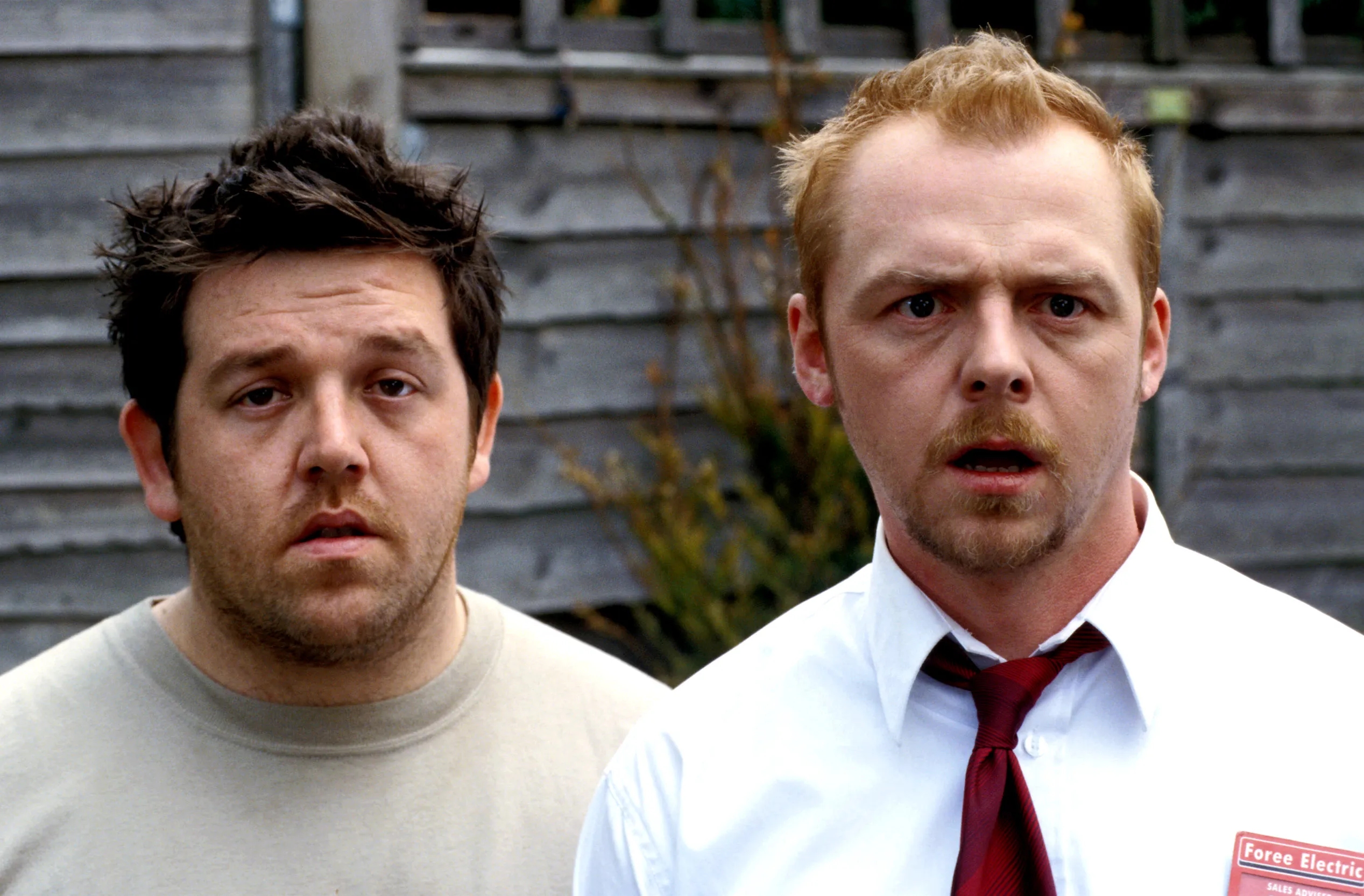Edgar Wright is a British filmmaker recognised for his distinctive directorial style and innovative storytelling. Wright is best known for his Three Flavours Cornetto Trilogy consisting of – Shaun of the Dead, Hot Fuzz, and The World’s End. His work is celebrated for its inventive blend of genres and its keen sense of visual comedy.
Wright’s protagonists are often flawed individuals grappling with personal responsibility and adulthood. The narrative arc often explores friendship, camaraderie, and the clash between the individual and the collective, typically represented by a small group pitted against a larger, frequently sinister societal force.
Visually, Wright’s directorial style is distinctive and instantly recognisable. His films exhibit kinetic camera work, meticulous visual composition, and rhythmic editing that often syncs with the music score. Wright is celebrated for his ability to subvert audience expectations by masterfully blending comedy with elements of horror, action, and sci-fi. His parodies and homages to classic cinema and his ability to blend genres seamlessly distinguish his unique visual style.
Wright’s impact on cinema extends far beyond his filmography. His ability to redefine genres, attention to visual detail, and emphasis on rhythmic storytelling have inspired a new generation of filmmakers. His films, particularly Shaun of the Dead and Scott Pilgrim vs The World, have gained cult status, influencing popular culture significantly. Wright’s relentless creativity, ability to surprise and entertain audiences, and commitment to originality make him an irreplaceable figure in contemporary cinema.
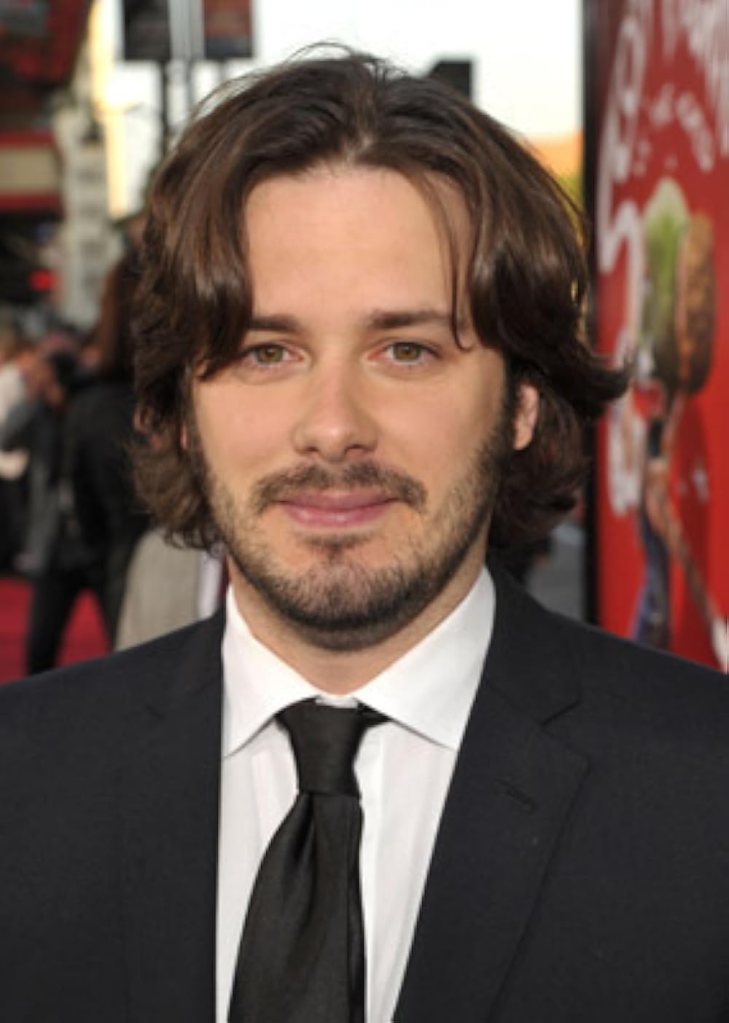
Edgar Wright (1974–)
Calculated Films:
- Shaun of the Dead (2004)
- Hot Fuzz (2007)
- Scott Pilgrim vs The World (2010)
- Baby Driver (2017)
Similar Filmmakers
- Ben Wheatley
- George A. Romero
- Guy Ritchie
- James Gunn
- Joe Cornish
- Joe Dante
- John Carpenter
- Kevin Smith
- Larry Cohen
- Matthew Vaughn
- Peter Jackson
- Quentin Tarantino
- Rian Johnson
- Robert Rodriguez
- Sam Raimi
- Shane Black
- Taika Waititi
- Walter Hill
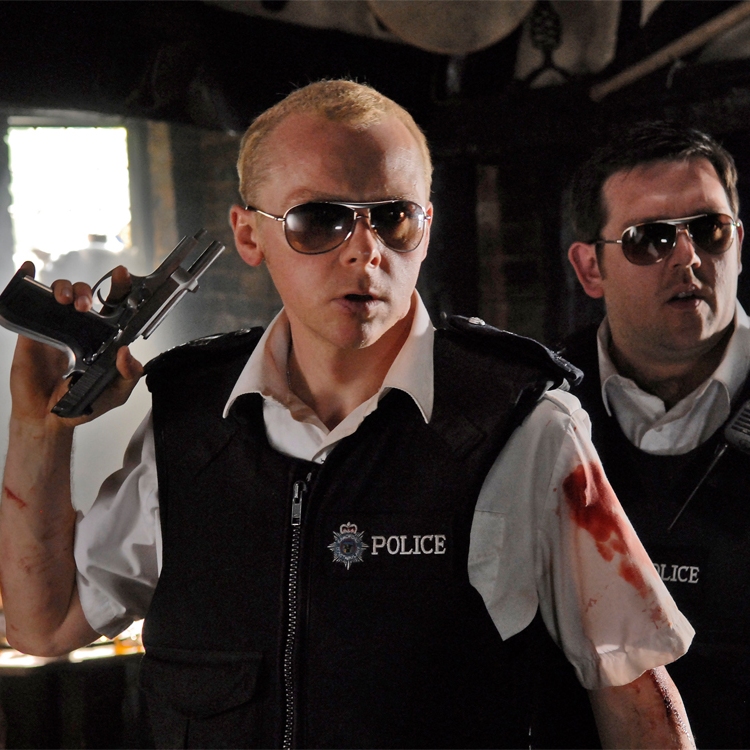
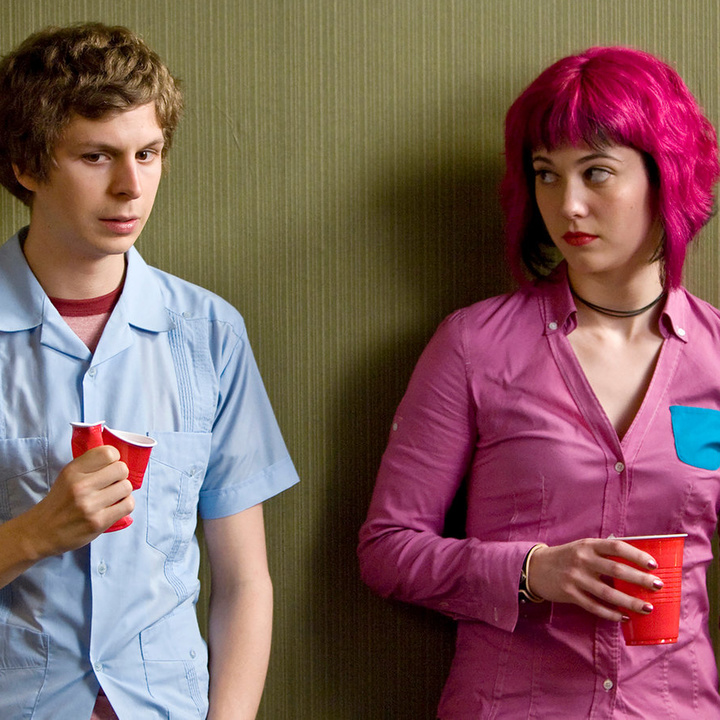

Edgar Wright’s Top Films Ranked
1. Shaun of the Dead (2004)
Genre: Zombie, Black Comedy, Parody, Horror Comedy, Comedy

2. Hot Fuzz (2007)
Genre: Parody, Action, Buddy Cop, Black Comedy, Crime

3. Scott Pilgrim vs The World (2010)
Genre: Action, Romantic Comedy, Music, Low Fantasy, Comedy, Magical Realism
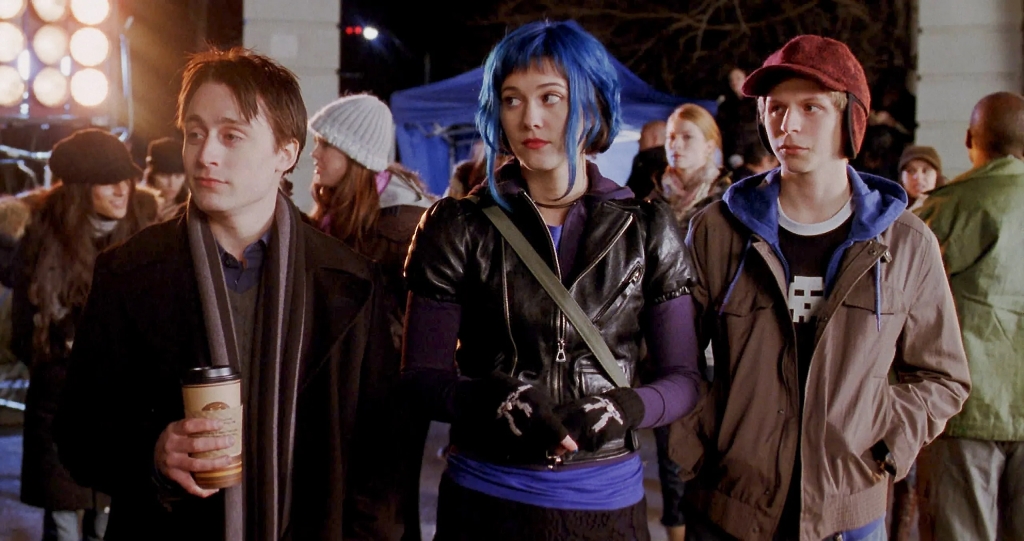
4. Baby Driver (2017)
Genre: Heist Film, Action, Music

5. The Sparks Brothers (2021)
Genre: Rockumentary, Music Documentary

6. The World’s End (2013)
Genre: Comedy, Sci-Fi, Alien Invasion, Coming-of-Age

7. Last Night in Soho (2021)
Genre: Psychological Horror, Mystery, Psychological Thriller

Edgar Wright: From Shaun to Soho
Edgar Wright was the kind of kid who would opt for a camcorder over a toy. Growing up in the English countryside, young Wright would spend countless hours recreating scenes from his favourite films and directing short adventures with his friends. These early experiences, though amateurish, laid the foundation for his unique cinematic flair, a blend of wit and energy that’s unmistakably his.
The seeds of Wright’s career were sown in these early comedic pastiches. He had an innate talent for parody, taking the essence of well-known genres or films and giving them a fresh, humorous twist. This would be a recurring theme throughout his work. Wright’s initial foray into professional filmmaking was with A Fistful of Fingers, a low-budget Western comedy. Although not a hit, it encapsulated his comedic pastiches, offering an early glimpse into the satirical style he would later perfect.
After A Fistful of Fingers, Wright transitioned to television, working on various comedy projects. But his collaboration with actors Simon Pegg and Jessica Stevenson (now Hynes) changed the game. Together, they created the groundbreaking sitcom ‘Spaced’, a series that was more than just a comedy – it was a heartfelt ode to Generation X. With its rapid-fire pop culture references and inventive editing style, ‘Spaced’ showcased Wright’s signature touch. Edgar Wright utilised the camera, turning every shot and every edit into a joke or a reference.
Cornetto Trilogy
Having honed his skills on television, Wright was poised to make a significant leap to the big screen. But no one, perhaps not even Wright himself, could have predicted the immense success of his next project. Collaborating once again with Simon Pegg, Wright birthed Shaun of the Dead, a zom-rom-com that was both a love letter to George Romero’s zombie films and a sharp, funny critique of modern life.
The story of Shaun, an aimless electronics store employee battling the monotony of life and a sudden zombie outbreak, resonated with audiences worldwide. It was a beautiful example of how Wright could infuse a well-trodden genre with British humour, making it fresh, innovative, and deeply entertaining.
Buoyed by Shaun of the Dead’s success, Wright sought to replicate the formula: take a genre, imbue it with distinctly British sensibilities, and turn it on its head. The result was Hot Fuzz, a buddy cop action film that satirised both the quaint British village life and the over-the-top action movies of the 80s and 90s. Once more, Simon Pegg was at the forefront, this time as an overzealous police officer transferred to a seemingly peaceful village, only to uncover a dark conspiracy.
While Shaun of the Dead used zombies as a backdrop for character growth and social commentary, Hot Fuzz took the archetypes of action heroes and played them out in the unlikely setting of rural England.
Scott Pilgrim and More
Moving past the quaint settings of English towns and villages, Wright took on a new challenge with Scott Pilgrim vs. The World, adapting a beloved graphic novel series. Here, he dipped his toes into the realm of young love and indie rock battles, culminating in an electrifying cinematic experience infused with his trademark humour. The film showcased Wright’s flair for innovative editing and was a visual feast, integrating comic book aesthetics, video game tropes, and a pulsating soundtrack. Though not an immediate box office sensation, the film has since gained cult status, emulating Wright’s talent for crafting films that resonate more deeply upon subsequent viewings.
Edgar Wright’s passion for storytelling isn’t restricted to the director’s chair. As a co-writer, his involvement in The Adventures of Tintin showcased his knack for weaving tales that appeal to both young and old, revitalising a beloved character for modern audiences. However, Wright’s most high-profile writing endeavour outside his direct directorial ventures was the Marvel superhero film Ant-Man. Originally slated to direct, he left due to creative differences but remained credited as co-writer.
Returning to familiar ground, Wright rounded off his ‘Cornetto Trilogy’ (following Shaun of the Dead and Hot Fuzz) with The World’s End. Here, he tackled themes of nostalgia, friendship, and the dangers of living in the past while setting it against the backdrop of an alien invasion in a small English town. As with his previous films, Wright masterfully blended genres, adding depth to what might seem a simple comedic premise. While diverse in its individual film themes, the trilogy is tied together by Wright’s signature humour, sharp commentary, and a loving touch of British culture.
Recent Films
Then came Baby Driver, a thrilling heist film with a twist: its central character, Baby, is a young getaway driver with tinnitus, leading to the entire movie being choreographed to an eclectic, engaging soundtrack. Wright’s knack for merging sound and visuals was at its zenith here.
Last Night in Soho marked another departure for Wright, steering into psychological thriller territory. But as always, it was an Edgar Wright film through and through, characterised by its dazzling visuals, intricate storyline, and ambience oscillating between the swinging 60s and the present day.
So, what makes Edgar Wright such a force to be reckoned with? Firstly, his deep-seated passion for films and filmmaking. His movies are replete with nods to cinema history, making them a treat for cinephiles. But more than that, Wright has this uncanny ability to take genres that audiences think they know and spin them in entirely new directions. His films are never just comedies, action flicks, or thrillers; they’re Edgar Wright films. They challenge conventions, subvert expectations, and always, always entertain.
This unique voice hasn’t gone unnoticed. Wright’s impact is undeniable, from the critical acclaim following most of his projects to the burgeoning number of young filmmakers citing him as an influence. In a world of franchised films and predictable plots, his work stands out for its originality, brilliance and commerciality.
Most Underrated Film
The World’s End often gets forgotten against its more celebrated siblings in Edgar Wright’s ‘Cornetto Trilogy’, like the darling Shaun of the Dead or the action-packed Hot Fuzz. While it isn’t as good as those two movies, it’s still a good trilogy member, which rarely gets the attention it deserves.
It’s a quintessential Wright film. The meticulousness with which he integrates sound and visuals, a trait seen in most of his works, is present here in full force. Take, for example, the pub brawl scenes. Wright’s choreography isn’t just about punches and tackles; it’s a symphony of movement, humour, and character development—all encapsulated in a few minutes of sheer adrenaline.
A common criticism of the film is its tonal shifts can be jarring. While it begins as a tale of middle-aged regression, it suddenly pivots into an alien invasion plot. But isn’t that quintessential Wright? He takes the mundane—a pub crawl reunion—and thrusts it into the realm of the absurd.
Where the film truly shines, and why it deserves more love, is its exploration of nostalgia and the dangers of over-romanticizing the past. The protagonist, Gary King (played brilliantly by Simon Pegg), grapples with his inability to move on from his youth. It’s a theme that resonates with many, portrayed in a manner only Wright could conceive. Instead of being a mere distraction, the alien subplot accentuates this, symbolising the alien nature of a past that no longer exists.
Edgar Wright: Themes and Style
Themes:
- Nostalgia and the Past: Wright often examines the allure and dangers of nostalgia, whether it’s the high school past of Scott Pilgrim vs. The World, the hometown glory days in The World’s End, or the swinging ’60s of Last Night in Soho. His characters frequently grapple with their memories, sometimes getting consumed by them.
- Genre Subversion: Wright enjoys taking well-established genres and turning them on their heads. Shaun of the Dead isn’t just a zombie film. It’s a “zom-rom-com”. Hot Fuzz isn’t a simple action film; it’s a satirical take on small-town Britain and action movie clichés.
- Personal Growth and Maturity: The theme of growing up or maturing is central to many of his films. Whether Shaun’s journey from a directionless man-child to a responsible adult or Gary King’s desperate cling to youth in The World’s End, Wright dives deep into the trials and tribulations of coming of age, however late it may be.
- Friendship and Loyalty: From the close-knit group in “Spaced” to the band in Scott Pilgrim vs. The World, the idea of friendship and the bonds we form play a pivotal role. Often, these bonds are tested, strained, and ultimately reaffirmed in the face of adversity.
Styles:
- Quick Cuts and Montages: One of Wright’s most recognised stylistic choices is his use of rapid editing. His montages, especially transition scenes, are fast-paced, often humorous, and always engaging.
- Visual Comedy: Wright is talented at making his shots part of the joke. Instead of solely relying on dialogue or situational humour, he integrates comedy into the very fabric of his scenes, using visual cues, background details, and camera movements.
- Meta References: A hallmark of Wright’s films is the constant nod to pop culture, other films, and even his work. His deep-seated appreciation for cinema and media is woven into his storytelling.
- Synchronised Soundtracks: Whether it’s the perfectly choreographed action sequences of Baby Driver or the diegetic musical cues in Shaun of the Dead, Wright masterfully uses music as a backdrop and an integral part of the narrative.
Directorial Signature:
- Genre Blending: Few directors meld genres as seamlessly as Wright. His films are never pigeonholed into one category; they effortlessly traverse between comedy, action, horror, and drama, often within the same scene.
- Recurring Collaborations: Wright frequently collaborates with certain actors and writers, most notably Simon Pegg and Nick Frost. Their collective synergy is palpable, adding a layer of familiarity and cohesiveness to his projects.
- Inventive Transitions: Wright’s scene transitions are innovative and often serve a dual purpose, moving the narrative forward while providing comedic or thematic value.
- Character-Centric Storytelling: Despite the wild scenarios and genre acrobatics, at the heart of every Wright film is a deeply human story. He crafts multi-dimensional characters, ensuring audiences are invested in their journeys, regardless of the outlandish situations they find themselves in.
Further Reading:
Articles and Essays:
- From Cult to Common: Edgar Wright’s Journey to the Mainstream by Miles Surrey, The Ringer
- 9 Reasons Why Edgar Wright Is the Most Innovative Filmmaker Today, Focus Features
- Deep Focus: Baby Driver by Michael Sragow, Film Comment
Edgar Wright: The 254th Greatest Director
